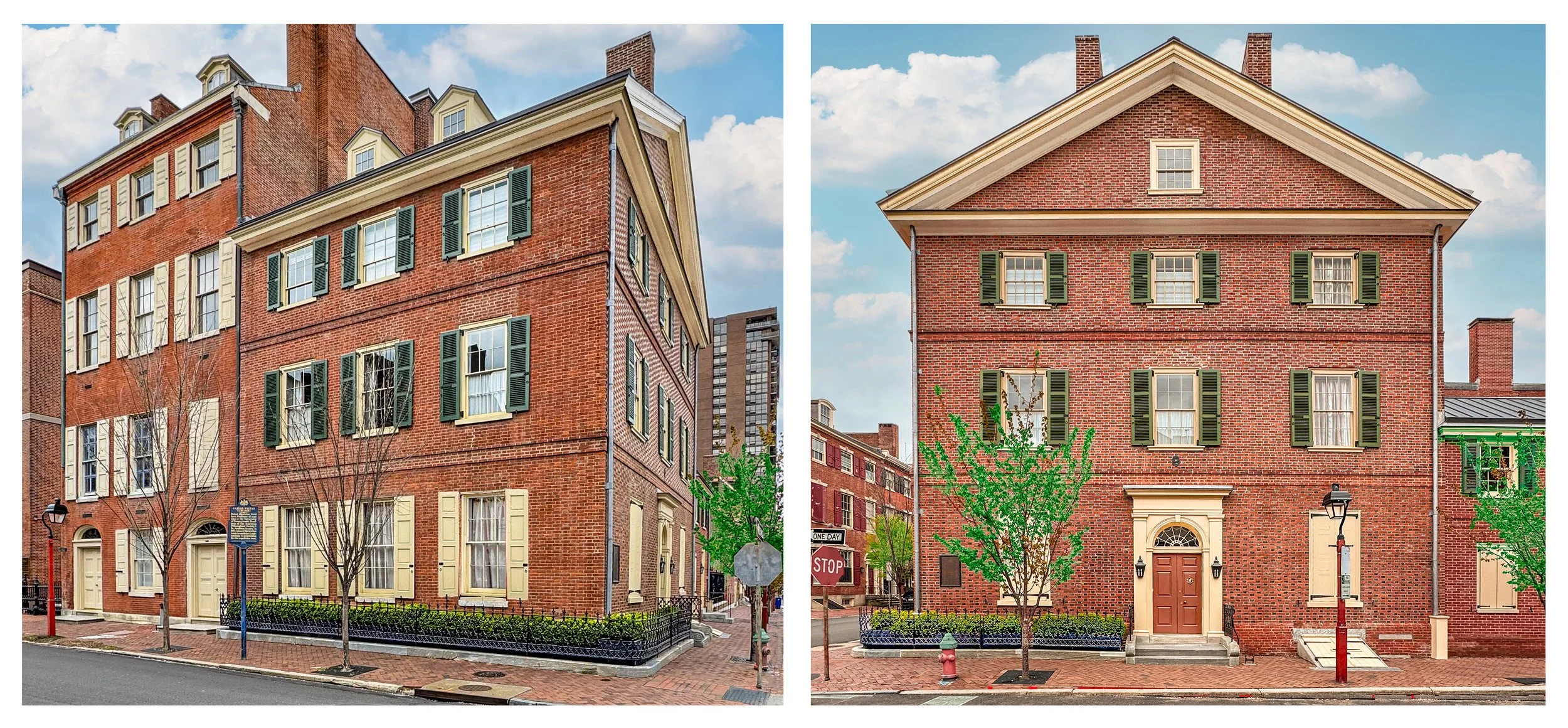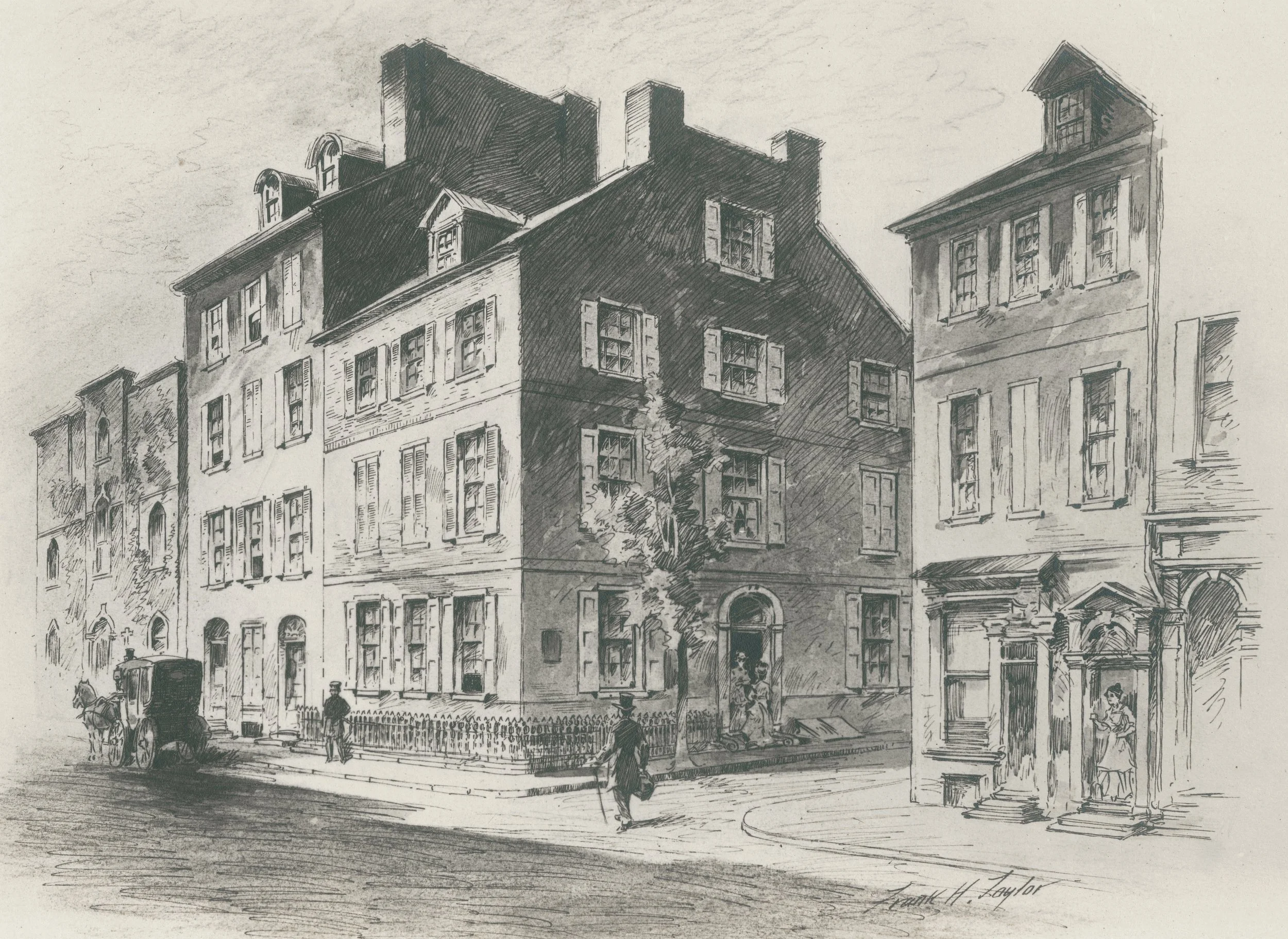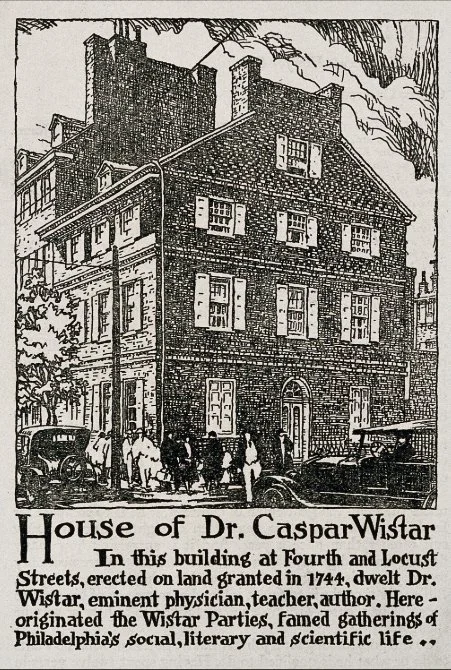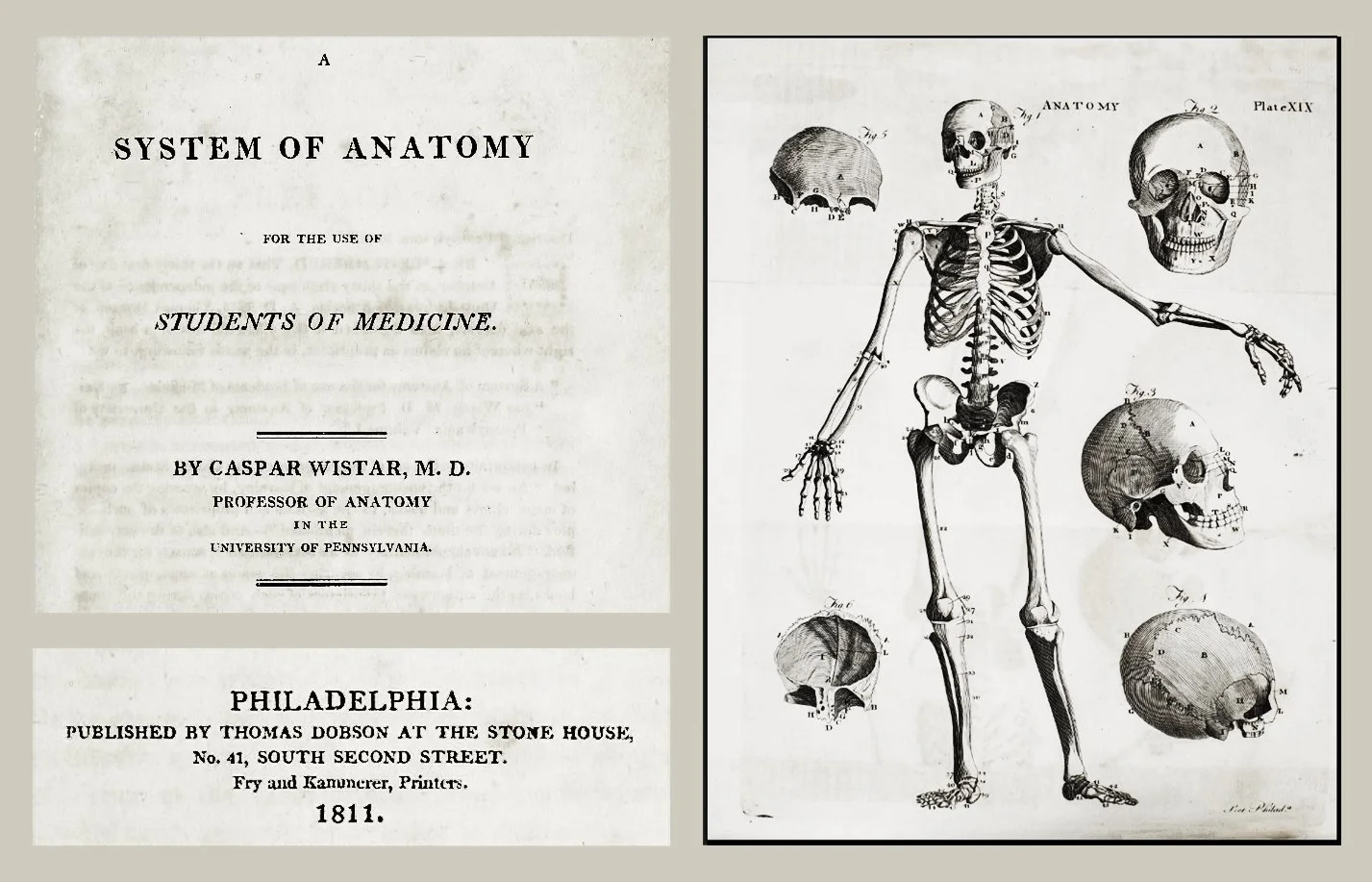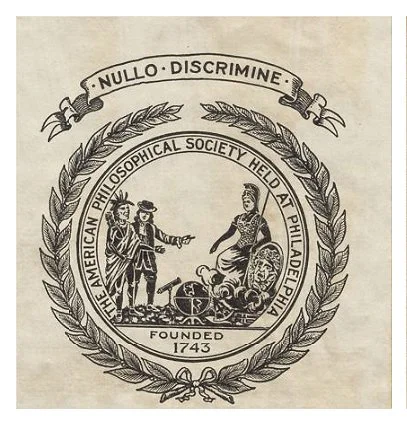Historic Quaker Houses of Philadelphia
The Shippen-Wistar House
238 South Fourth Street
Built: ca. 1765
Above left: Side elevation, Fourth Street. Above right: Front entry on Locust Street. Image source: Lee J. Stoltzfus
Portrait of Dr. Caspar Wistar
By Thomas Sully in 1830:
Image source: American Philosophical Society
A Drawing of the Wistar House ca. 1922
By Frank H. Taylor:
Image source: The Library Company of Philadelphia
The Shippen-Wistar House Description
Philadelphia Register of Historic Places:
Above: Image source: Philadelphia Register of Historic Places
Image source: Wellcome Collection
Dr. Caspar Wistar
Professor at College of Pennsylvania (U. of Penn)
Author of the First American Textbook of Anatomy:
Above: The 1811 first edition, and the 1823 illustrated edition. Image source: Internet Archive
Dr. Caspar Wistar published his anatomy lectures in A System of Anatomy for the Use of Students of Medicine, in two volumes in 1811 and 1814. This is the first anatomy textbook printed in the U. S. His textbook became a primary reference for medical students for many years, and saw numerous editions.
Philadelphia’s Wistar Institute
A Global Leader in Biomedical Research
Named for Dr. Caspar Wistar:
Above: Wistar Institute in Philadelphia. Image source: Wikipedia.
The Wistar Institute is a nonprofit research institution in biomedical science. The organization was founded in 1892 as the Wistar Institue of Anatomy and Biology, based on Dr. Caspar Wistar’s collection of anatomical specimens.
The institute was named for Dr. Caspar Wistar by his great-nephew, Isaac Jones Wistar. This Wistar nephew was a prominent Philadelphia lawyer, and was vice president of the Pennsylvania Railroad.
Dr. Caspar Wistar:
Quaker Humanitarian, Anti-Slavery Advocate
President of Slavery Abolition Society
The First Abolition Society in the U. S.
Above left: The Pennsylvania Abolition Society, organized in 1775. Image source: PaAbolition.org
Above right: Dr. Caspar Wistar. He became president of the Abolition Society in 1813. Image source: Penn Libraries
“The Pennsylvania Abolition Society was founded in 1775 by a group of mostly Quaker men in Philadelphia. Originally called ‘the Pennsylvania Society for the Relief of Free Negroes Unlawfully Held in Bondage,’ the group’s primary mission at that time was to render aid to free people of color who had been wrongfully enslaved.” Quote: Historical Society of Pennsylvania.
The organization also focused on social and economic improvement for Black Americans. It was Quaker conscience that led Friends to form this abolition society. Sixteen of the original 24 members were Quakers.
Dr. Wistar was also involved with the Pennsylvania Prison Society and the the Humane Society
Dr. Caspar Wistar
President of the American Philosophical Society
Enlightenment Ideals in Philadelphia:
Image source: American Philosophical Society
Above: The seal of Philadelphia’s American Philosophical Society features the motto “Nullo Discrimine” (Without Discrimination).
A European man and an American Indian gesture toward Minerva, Goddess of Wisdom, who is surrounded by books and scientific instruments. The seal reflects the society’s goal to transfer wisdom from the Old World to America, and the inclusion of diverse cultures in the pursuit of enlightenment. It is an ideal that feels distinctly Philadelphian.
Dr. Caspar Wistar was elected president of the American Philosophical Society in 1815. He succeeded Thomas Jefferson as president of that scholarly organization.

